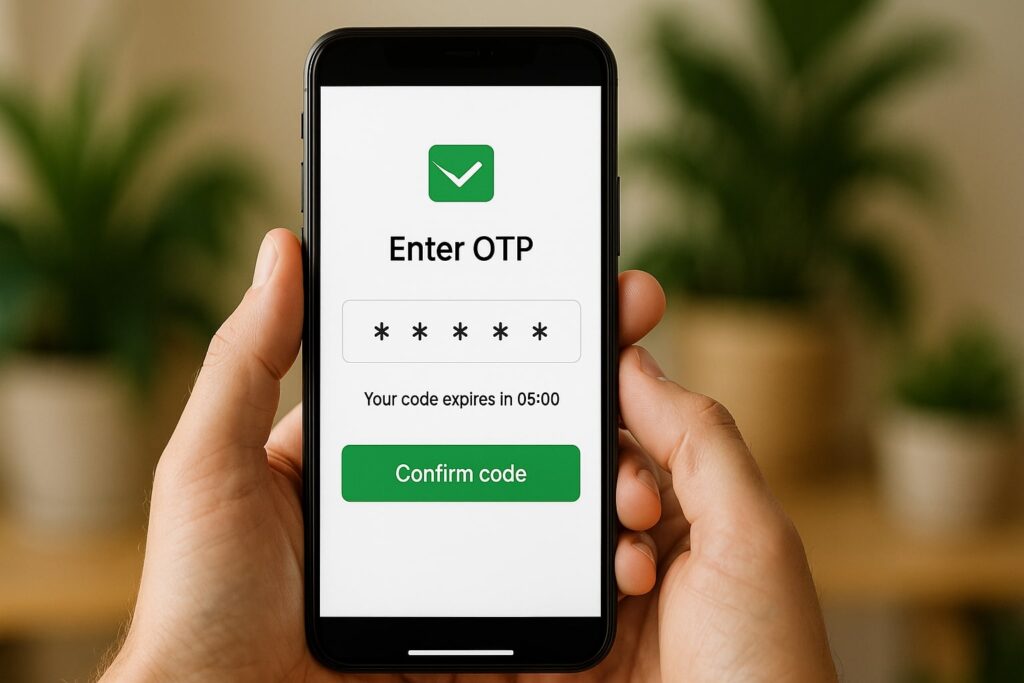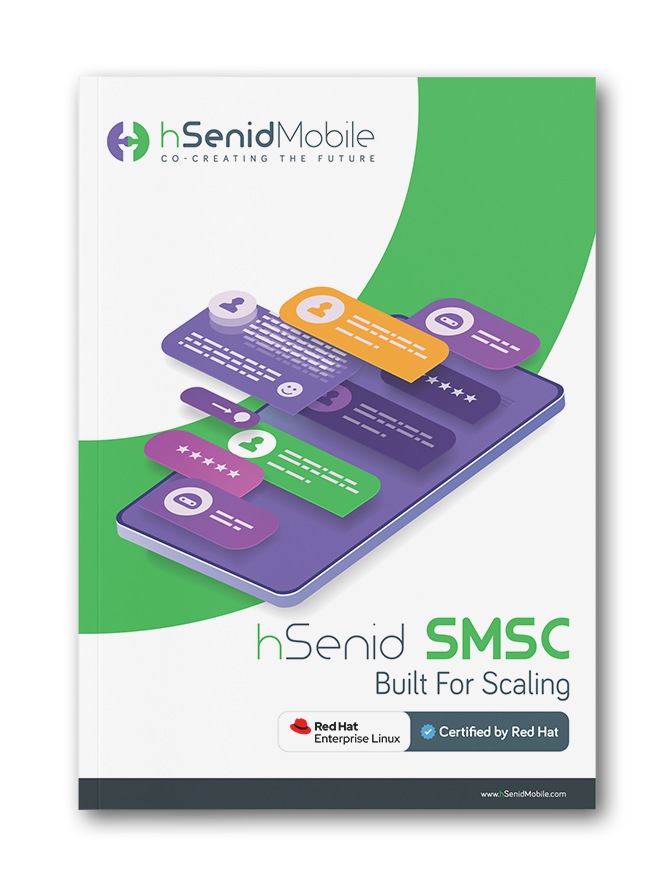Every time your users tap ‘Send Code,’ you have mere seconds to prove your
promise of security and convenience. But when that OTP never arrives,
confidence evaporates: users feel stranded, support queues swell, and your
brand’s reliability comes into question. In this post, we’ll dive into the
hidden roadblocks that hijack your OTPs and show how an enterprise-grade SMSC
can turn those critical seconds back in your favor.
From remote areas with intermittent network coverage to global enterprises handling millions of authentication requests per hour, OTP delivery failures stem from a complex web of technical and operational gaps. Overloaded servers, patchy carrier relationships, and inadequate SMSC capacity can all conspire to delay or completely block your critical security messages. In this article, we’ll uncover these failure points and show how an enterprise-grade Short Message Service Center can restore reliability to your OTP workflow.
In practice, OTP delays and failures often originate at the intersection of network congestion, server bottlenecks, and vendor outages. When your SMS provider lacks direct connections to multiple mobile operators or operates on limited throughput, even mild surges in traffic can swamp its infrastructure. Technological incompatibilities, such as mismatched protocol support or legacy SS7 links, can further disrupt message flows, resulting in inconsistent delivery.
The consequences extend beyond annoyance. End users may abandon transactions if codes don’t arrive within the validity window, driving conversion declines and revenue leakage. Repeated OTP requests can trigger rate limits or false fraud alerts, complicating customer experiences and raising operational overhead. In sensitive sectors like finance or healthcare, delays of just a few seconds can undermine two-factor authentication workflows and, by extension, the entire security posture.
A Short Message Service Center (SMSC) serves as the control hub for SMS routing, queuing, and delivery. While consumer-grade SMSCs often focus on basic text messaging, enterprise-grade solutions are engineered for mission-critical transactions like OTP dispatch. They leverage carrier-grade hardware, scalable architectures, and redundant network paths to ensure high throughput and near-zero downtime.
Key advantages include load-balanced connections to multiple telecom carriers, reducing single points of failure, and sophisticated queuing algorithms that prioritize time-sensitive messages. Real-time analytics dashboards provide visibility into delivery rates, latency metrics, and error codes, empowering IT teams to proactively detect and resolve issues before they impact end users. In essence, an enterprise SMSC transforms OTP delivery from a fragile point solution into a robust, observable service.
Adopting an enterprise-grade SMSC begins with selecting a provider that demonstrates proven reliability and deep carrier integrations. Look for vendors with established track records in two-factor authentication deployments and a clear SLA guaranteeing uptime and delivery speed. Evaluate their geographic reach to ensure they cover your key markets, especially if you serve users in regions with diverse telecom operators.
Integration should follow a phased approach:
Reliability starts with smart OTP design. Generate unique, single-use codes bound to specific sessions and enforce short expiration windows, ideally, no more than a few minutes. To prevent interception, implement end-to-end encryption between your application servers and the SMSC, ensuring that codes remain unreadable in transit. On the backend, employ rigorous validation logic that invalidates outdated or reused OTPs, thwarting replay attacks and credential-stuffing attempts.
By combining these generation best practices with an enterprise-grade SMSC’s delivery guarantees, you create a seamless authentication experience that balances security and user convenience.
Once your enterprise SMSC is in place, continuous monitoring becomes the linchpin of sustained performance. Leverage built-in analytics to track metrics such as delivery rate by carrier, average latency per message, and failure codes. Set up real-time alerts for delivery rates dropping below defined thresholds or spikes in error responses like “network unreachable” or “expired message.” These insights allow your operations team to swiftly adjust routing policies, switch carriers, or scale throughput limits.
Regularly review reports to spot long-term trends such as growing traffic peaks during seasonal promotions, and proactively expand capacity before delivery issues arise. In combination with periodic pilot tests and integration health checks, this ongoing optimization ensures your OTP pipeline remains resilient, even as your user base and security demands evolve.
In the race to secure digital interactions, every second and every message counts. OTP delivery failures not only frustrate users but also jeopardize your brand reputation and bottom line. By embracing an enterprise-grade SMSC, you gain the infrastructural backbone needed to deliver tens of thousands of codes per second, reroute traffic dynamically, and maintain end-to-end visibility into your authentication workflows.
Unlock unmatched OTP delivery performance and reliability with the enterprise-grade hSenid SMSC. Engineered for massive throughput, dynamic rerouting, and end-to-end visibility even under peak loads, hSenid SMSC ensures every one-time code reaches your users without delay or loss. Partner with hSenid SMSC today to transform your authentication workflows into a rock-solid, high-availability service that safeguards your brand and delights your customers.
From remote areas with intermittent network coverage to global enterprises handling millions of authentication requests per hour, OTP delivery failures stem from a complex web of technical and operational gaps. Overloaded servers, patchy carrier relationships, and inadequate SMSC capacity can all conspire to delay or completely block your critical security messages. In this article, we’ll uncover these failure points and show how an enterprise-grade Short Message Service Center can restore reliability to your OTP workflow.
Understanding OTP Delivery Failures
In practice, OTP delays and failures often originate at the intersection of network congestion, server bottlenecks, and vendor outages. When your SMS provider lacks direct connections to multiple mobile operators or operates on limited throughput, even mild surges in traffic can swamp its infrastructure. Technological incompatibilities, such as mismatched protocol support or legacy SS7 links, can further disrupt message flows, resulting in inconsistent delivery.
The consequences extend beyond annoyance. End users may abandon transactions if codes don’t arrive within the validity window, driving conversion declines and revenue leakage. Repeated OTP requests can trigger rate limits or false fraud alerts, complicating customer experiences and raising operational overhead. In sensitive sectors like finance or healthcare, delays of just a few seconds can undermine two-factor authentication workflows and, by extension, the entire security posture.
Why Enterprise-Grade SMSCs Matter
A Short Message Service Center (SMSC) serves as the control hub for SMS routing, queuing, and delivery. While consumer-grade SMSCs often focus on basic text messaging, enterprise-grade solutions are engineered for mission-critical transactions like OTP dispatch. They leverage carrier-grade hardware, scalable architectures, and redundant network paths to ensure high throughput and near-zero downtime.
Key advantages include load-balanced connections to multiple telecom carriers, reducing single points of failure, and sophisticated queuing algorithms that prioritize time-sensitive messages. Real-time analytics dashboards provide visibility into delivery rates, latency metrics, and error codes, empowering IT teams to proactively detect and resolve issues before they impact end users. In essence, an enterprise SMSC transforms OTP delivery from a fragile point solution into a robust, observable service.
Implementing an Enterprise SMSC
Adopting an enterprise-grade SMSC begins with selecting a provider that demonstrates proven reliability and deep carrier integrations. Look for vendors with established track records in two-factor authentication deployments and a clear SLA guaranteeing uptime and delivery speed. Evaluate their geographic reach to ensure they cover your key markets, especially if you serve users in regions with diverse telecom operators.
Integration should follow a phased approach:
- System Assessment: Map your current authentication workflows and pinpoint bottlenecks in delivery.
- Custom Routing: Configure the SMSC with routing rules that align with your traffic patterns, prioritizing OTP traffic via the fastest available carrier paths.
- Pilot Testing: Roll out in a controlled environment, monitoring delivery success rates, round-trip times, and latency metrics.
- Incremental Rollout: Expand gradually, using real-time dashboards to fine-tune queuing thresholds, retry policies, and fallback mechanisms.
Enhancing OTP Reliability and Security
Reliability starts with smart OTP design. Generate unique, single-use codes bound to specific sessions and enforce short expiration windows, ideally, no more than a few minutes. To prevent interception, implement end-to-end encryption between your application servers and the SMSC, ensuring that codes remain unreadable in transit. On the backend, employ rigorous validation logic that invalidates outdated or reused OTPs, thwarting replay attacks and credential-stuffing attempts.
By combining these generation best practices with an enterprise-grade SMSC’s delivery guarantees, you create a seamless authentication experience that balances security and user convenience.
Monitoring and Optimizing SMS Delivery
Once your enterprise SMSC is in place, continuous monitoring becomes the linchpin of sustained performance. Leverage built-in analytics to track metrics such as delivery rate by carrier, average latency per message, and failure codes. Set up real-time alerts for delivery rates dropping below defined thresholds or spikes in error responses like “network unreachable” or “expired message.” These insights allow your operations team to swiftly adjust routing policies, switch carriers, or scale throughput limits.
Regularly review reports to spot long-term trends such as growing traffic peaks during seasonal promotions, and proactively expand capacity before delivery issues arise. In combination with periodic pilot tests and integration health checks, this ongoing optimization ensures your OTP pipeline remains resilient, even as your user base and security demands evolve.
Conclusion
In the race to secure digital interactions, every second and every message counts. OTP delivery failures not only frustrate users but also jeopardize your brand reputation and bottom line. By embracing an enterprise-grade SMSC, you gain the infrastructural backbone needed to deliver tens of thousands of codes per second, reroute traffic dynamically, and maintain end-to-end visibility into your authentication workflows.
Unlock unmatched OTP delivery performance and reliability with the enterprise-grade hSenid SMSC. Engineered for massive throughput, dynamic rerouting, and end-to-end visibility even under peak loads, hSenid SMSC ensures every one-time code reaches your users without delay or loss. Partner with hSenid SMSC today to transform your authentication workflows into a rock-solid, high-availability service that safeguards your brand and delights your customers.








